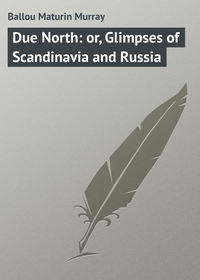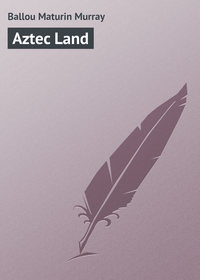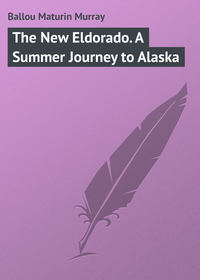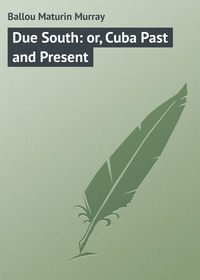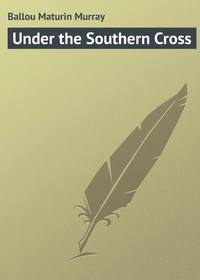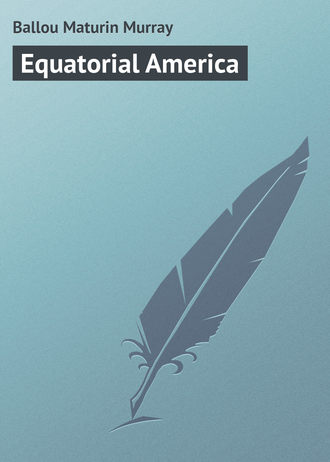 полная версия
полная версияEquatorial America
The great fertility of the soil generally would seem to militate against the true progress of the people of South America, absolutely discouraging, rather than stimulating national industry. One cannot but contrast the state of affairs in this respect with that of North America, where the soil is so much less productive, and where the climate is so universally rigorous. The deduction is inevitable that, to find man at his best, we must observe him where his skill, energy, and perseverance are all required to achieve a livelihood, and not where exuberant nature is over-indulgent, over-productive. The coast, the valleys, and indeed the main portion of South America are tropical, but a considerable section of the country is so elevated that its climate is that of perpetual spring, resembling the great Mexican plateau, both physically and as regards temperature. The population is largely of Spanish descent, and that language is almost universally spoken, though Portuguese is the current tongue in Brazil. These languages are so similar, in fact, that the people of the two nations can easily understand each other. It is said to be true that, in the wild regions of the country, there are tribes of Indians found to-day living close to each other, separated by no physical barriers, who differ materially in language, physiognomy, manners, and customs, having absolutely nothing in common but their brown or copper colored skins. Furthermore, these tribes live most frequently in deadly feuds with each other. That cannibalism is still practiced among these interior tribes is positively believed, especially among some of the tribes of the extreme south, that is, among the Patagonians and the wild, nomadic race of Terra del Fuego. These two tribes, on opposite sides of the Strait of Magellan, are quite different from each other in nearly every respect, especially in size, nor will they attempt to hold friendly intercourse of any sort with each other.
There are certain domestic animals which are believed to be improved by crossing them with others of a different type, but this does not seem to apply, very often, advantageously to different races of human beings. It is plain enough in South America that the amalgamation of foreigners and natives rapidly effaces the original better qualities of each, the result being a mongrel, nondescript type, hard to analyze and hard to improve. That keen observer, Professor Agassiz, especially noticed this during his year of scientific research in Brazil. This has also been the author's experience, as illustrated in many lands, where strictly different races, the one highly civilized, the other barbarian, have unitedly produced children. It is a sort of amalgamation which nature does not favor, recording her objections in an unmistakable manner. It is the flow of European emigration towards these southern republics which will infuse new life and progress among them. The aboriginal race is slowly receding, and fading out, as was the case in Australia, in New Zealand, and in the instance of our western Indians. A new people will eventually possess the land, composed of the several European nationalities, who are already the virtual masters of South America so far as regards numbers, intelligence, and possession.
Since these notes were written, the Argentine government has sold to Baron Hirsch three thousand square leagues of land in the province of Chaco, for the formation of a Jewish colony. Agents are already at work, aided by competent engineers and practical individuals, in preparing for the early reception of the new occupants of the country. The first contingent, of about one thousand Jews, have already arrived and are becoming domesticated. Argentina wants men perhaps more than money; indeed, one will make the other. A part of Baron Hirsch's scheme is to lend these people money, to be repaid in small installments extending over a considerable period. For this extensive territory the Baron paid one million three hundred thousand dollars in gold, thus making himself the owner of the largest connected area of land in the world possessed by a single individual. It exceeds that of the kingdom of Montenegro.
As to the zoölogy of this part of the continent, it is different from that of Europe, Africa, Asia, and North America. The number of dangerous beasts of prey is quite limited. There is nothing here to answer to the African lion, the Asiatic tiger, the elephant of Ceylon, or the grisly bear of Alaska. The jaguar is perhaps the most formidable animal, and resembles the leopard. There are also the cougar, tiger-cat, black bear, hyena, wolf, and ocelot. The llama, alpaca, and vicuña are peculiar to this country. The monkey tribe exceeds all others in variety and number. There are said to be nearly two hundred species of them in South America, each distinctly marked, and varying from each other, in size, from twelve pounds to less than two. The smallest of the little marmosets weigh less than a pound and a half each, and are the most intelligent animal of their size known to man. There are also the deer, tapir, armadillo, anteater, and a few other minor animals. The pampas swarm with wild cattle and horses, descended from animals originally brought from Europe. In the low, marshy grounds the boa-constrictor and other reptiles abound. Eagles, vultures, and parrots are found in a wild state all over the country, while the rivers and the waters near the coast are well filled with fish, crocodiles, and turtles. Scientists have found over two thousand species of fish in the Amazon River alone.
The pure aboriginal race are copper colored, resembling the Mexicans in character and appearance. Like most natives of equatorial regions, they are indolent, ignorant, superstitious, sensuous, and by no means warlike. Forced into the ranks and drilled by Europeans, they make fairly good soldiers, and when well led will obey orders and fight. There can be no esprit de corps in soldiers thus organized; the men neither know nor care what they fight for, their incentive in action being first a natural instinct for brutality, and second the promise of booty. In some parts of the country the half-breeds show themselves skillful workmen in certain simple lines of manufacture, but the native pure and simple will not work except to keep from starving.
The Spaniards conquered nearly all parts of South America except Brazil, which was subject to Portugal until 1823, when it achieved its independence. The Spanish colonies also revolted, one by one, until they all became independent of the mother country. The history of these republics, as in the instance of Mexico, has been both stormy and sanguinary. Foreign and civil wars have reigned among them incessantly for half a century and more.
The present political divisions are: Brazil, British Guiana, Dutch Guiana, French Guiana, Ecuador, United States of Colombia, Venezuela, Bolivia, Chili, Peru, Argentine Republic, Uruguay, and Paraguay. Brazil is the most extensive of these states, and is thought to enjoy the largest share of natural advantages, including in its area nearly one half as many square miles as all the rest combined. Its seaboard at Parahiba, and for hundreds of miles north and south of it, projects into the Atlantic a thousand miles to the east of the direct line between its northern and southern extremities. Besides her diamond and gold mines, she possesses what is much more desirable, namely, valuable deposits of iron, copper, silver, and other metals. We have before us statistics which give the result of diamond mining in Brazil from 1740 to 1823, when national independence was won, which show the aggregate for that entire period to have been less than ten million dollars in value; while that of the coffee alone, exported from Rio Janeiro in one year, exceeded twenty million dollars, showing that, however dazzling the precious stones may appear in the abstract, they are not even of secondary consideration when compared with the agricultural products of the country. The export of coffee has increased very much since the year 1851, which happens to be that from which we have quoted. It must also be admitted that probably twice the amount of diamonds recorded were actually found and enriched somebody, all which were duly reported, having to pay a government royalty according to the pecuniary exigency of those in authority.
The population of Brazil is between fourteen and fifteen million, and it is thought to be more advanced in civilization than other parts of South America, though in the light of our own experience we should place the Argentine Republic first in this respect. Indeed, so far as a transient observer may speak, we are inclined to place Argentina far and away in advance of Brazil as regards everything calculated to invite the would-be emigrant who is in search of a new home in a foreign land. Were it not that intestine wars are of such frequent occurrence among these states, and national bankruptcy so common, voluntary emigration would tend towards South America in far larger numbers than it does now. The revolutions are solely to promote personal aggrandizement; it is individual interest, not principle, for which these people fight so often. Unfortunately, every fresh outbreak throws the country back a full decade as regards national progress. The late civil wars in Chili and the Argentine Republic are illustrations in point. The first-named section of South America has suddenly sunk from a condition of remarkable pecuniary prosperity to one of actual poverty. Thousands of valuable lives have been sacrificed, an immense amount of property has been destroyed, her commerce crippled, and for the time being paralyzed. Ten years of peace and reasonable prosperity could hardly restore Chili to the position she was in twelve months ago. The country is to-day in a terrible condition, while many of the best families mourn the death of a father, a son, or both, whose lives have been sacrificed to the mad ambition of a usurper. Numerous families, once rich, have now become impoverished by the confiscation of their entire property. The Chilians do not carry on warfare in European style, by organized armies; there is a semblance only of such bodies. The fighting is mostly after the fashion of free lances, guerrilla bands, and highwaymen. There seems to be no sense of honor or chivalry among the common people, while the only idea of the soldiery is to plunder and destroy.
The Peruvians whose cities were despoiled by Chili must have regarded the recent cutting of each other's throats by the Chilian soldiery with something like grim satisfaction.
The obvious weakness of the South American states lies in their bitter rivalry towards each other, a condition which might be at once obviated by their joining together to form one united nation. The instability which characterizes their several governments in their present isolated interests has passed into a byword. Divided into nine unimportant states, – leaving out the three Guianas, which are dependent upon European powers, – any one of them could be erased from the map and absorbed by its stronger neighbor, or by a covetous foreign power. On the contrary, by forming one grand republic, it would stand eighth in the rank of nations as regards wealth, importance, and power, amply able to take care of itself, and to maintain the integrity of its territory. A community of interest would also be established between our government and that of these South American provinces, which would be of immense commercial and political importance to both nations.
To those who have visited the country, and who have carefully observed the conditions, it is clear that this division of the continent will never thrive and fully reap the benefit of its great natural advantages until the independent republics assume the position of sovereign states, subservient to a central power, a purpose which has already been so successfully accomplished in Mexico.
While we have been considering the great southern continent as a whole, our good ship, having crossed the equator, has been rapidly approaching its northern shore. After entering the broad mouth of the Amazon and ascending its course for many miles, we are now in sight of the thriving metropolis of Pará.
CHAPTER V
City of Pará. – The Equatorial Line. – Spanish History. – The King of Waters. – Private Gardens. – Domestic Life in Northern Brazil. – Delicious Pineapples. – Family Pets. – Opera House. – Mendicants. – A Grand Avenue. – Botanical Garden. – India-Rubber Tree. – Gathering the Raw Material. – Monkeys. – The Royal Palm. – Splendor of Equatorial Nights.
Pará is the most northerly city of Brazil. It also bears the name of Belem on some maps, and is the capital of a province of the first designation. The full official title of the place is, in the usual style of Portuguese and Spanish hyperbole, Santa Maria do Belem do Grão Pará, which has fortunately and naturally simplified itself to Pará. It was founded in 1615, and the province of which it is the capital was the last in Brazil to declare its independence of the mother country, and to acknowledge the authority of the first emperor, Dom Pedro. It is the largest political division of the republic, and in some respects the most thriving. The city is situated about ninety miles south of the equator, and eighty miles from the Atlantic Ocean on the Pará River, so called, but which is really one of the mouths of the Amazon. It is thus the principal city at the mouth of the largest river in the world, a fact quite sufficient to indicate its present, and to insure its continued commercial importance.
As we entered the muddy estuary of the river, whose wide expanse was lashed into short, angry waves by a strong wind, large tree trunks were seen floating seaward, rising and sinking on the undulating surface of the water. Some were quite entire, with all of their branches still attached to the main trunk. They came, perhaps, from two thousand miles inland, borne upon the swift current from where it had undermined the roots in their forest home. Among the rest was a cocoa-palm with its full tufted head, some large brown nuts still hanging tenaciously to the parent stem. It had fallen bodily, while in its prime and full bearing, suddenly unearthed by some swift deviation of the river, which brooks no trifling impediment to its triumphal march seaward. How long, one would be glad to know, has this vast stream, fed by the melted snow of the Andes, poured its accumulated waters into the bosom of the ocean? A thousand years is but as a day, in reckoning the age of a mountain range or of a mammoth river.
As we approached the city, the channel became gradually narrowed by several prominent islands, crowded with rich green vegetation, forest trees of various sorts, mangoes, bananas, and regal palms. Though it is thus broken by islands, the river is here over twenty miles in width.
Pará is yielded precedence over the other cities on the east coast of South America in many respects, and is appreciatively called "Queen of the Amazon," her water communication reaching into the very heart of some of the most fertile valleys on the continent. One incorporated company has established a score of well-appointed steamers, averaging five hundred tons each, which navigate the river for a distance of two thousand miles from its mouth. Pará has an excellent harbor, of large capacity, accommodating an extensive commerce, a considerable portion of which is with the United States of North America. It has a mixed population of about fifty thousand, composed of an amalgamation of Portuguese, Italians, Indians, and negroes, and is the only town of any importance, except Quito, situated so near to the equatorial line, where the interested observer has the privilege of beholding the starry constellations of both hemispheres. Ships of five thousand tons measurement can lie within a hundred yards of the wharves of Pará, where the accumulation of coffee, dyewoods, drugs, tobacco, cotton, cocoa, rice, sugar, and raw india-rubber, indicates the character of the principal exports. Of all these staples, the last named is the most important, in a commercial point of view, occupying the third place on the list of national exports. As we have shown, the import and export trade of the Amazon valley naturally centres here, and Pará need fear no commercial rival.
For a considerable period this unequaled water-way, forming the spacious port, and conveying the drainage of nearly half of South America into the Atlantic, bore the name of its discoverer, Orellana, one of Pizarro's captains; but the fabulous story of a priest called Friar Gaspar, self-constituted chronicler of the expedition, gave to it the designation which it now bears. All the Spanish records of the history and conquests in the New World, relating to the doings of Columbus, Cortez, Pizarro, and others, without an exception, were written in the same spirit of exaggeration and untruthfulness, leading that pious witness and contemporary writer, Las Casas, to pronounce them, with honest indignation, to be a tissue of falsehoods. Even our own popular historian, Prescott, who drew so largely upon these sources for his poetical productions, was forced to admit their manifest incongruities, contradictions, and general irresponsibility. This Munchausen of a priest, Friar Gaspar, recorded that a tribe of Amazons, or fighting women, was encountered far inland, on the banks of the mighty river, who were tall in stature, symmetrical in form, and had a profusion of long hair, which hung in braids down their backs. They were represented to be as warlike as they were beautiful, and as carrying shields and spears, the latter of which they could use with great skill and effect. It was this foolish story of the Amazons, hatched in the prolific brain of Friar Gaspar, which gave the river its lasting name.
The Indian designation of the mammoth watercourse was significant and appropriate, as their names always are. They called it Parana-tinga, meaning "King of Waters," and it seems to us a great pity that the name could not have been retained.
Pará has the advantage of being much nearer to the United States and to Europe than Rio Janeiro, the capital of Brazil. Though the commerce of Rio is constantly increasing, in spite of its miserable sanitary condition, it is confidently believed by intelligent persons engaged in the South American trade, that Pará will equal it erelong in the aggregate of its shipments. All freight is now landed by means of lighters, a process which is an awkward drawback upon commerce, and what makes it still more aggravating is that it seems to be an entirely needless one. Certainly a good, substantial, capacious pier might be easily built, which would obviate this objection, accommodating a dozen large vessels at the same time. The Brazilians are slow to adopt any modern improvement. Portuguese and Spaniards are very much alike in this respect. Wharves will be built at Pará by and by, after a few more millions have been wasted upon the inconvenient process now in vogue, which involves not only needless expense, but causes most awkward and unreasonable delay, both in landing merchandise and in shipping freight for export. This serious objection applies to all the ports along the east coast of South America. There is always some private interest which exerts itself to prevent any progressive movement, and it is this which retards improved facilities for unloading and shipping of cargoes at Pará. In this instance the owners of the steam tugs which tow the flat-bottomed lighters from ship to shore, and vice versa, oppose the building of piers, because, if they were in existence, these individuals would find their profitable occupation gone. If proper wharf facilities were to be furnished, commerce generally would be much benefited, though a few persons would suffer some pecuniary loss. As we have said, the wharves will come by and by, when the people realize that private interest must be subservient to the public good.
The city of Pará is situated upon slightly elevated ground, and makes a fine appearance from the river, with its lofty cathedral, numerous churches, convents, custom house, and arsenal standing forth in bold relief against an intensely blue sky, while fronting the harbor, like a line of sentinels, is a row of tall, majestic palms, harmonizing admirably with the local surroundings, though in the very midst of a busy commercial centre. The buildings are painted yellow, blue, or pink, the façades contrasting strongly with the dark red of the heavily tiled roofs, which, having no chimneys, present an odd appearance to a northern eye. Here and there a mass of greenery indicates some domestic garden, or a plaza presided over by tall groups of trees, among which the thick, umbrageous mangoes prevail. The Rua da Imperatriz is the principal wholesale street of the city, where the large warehouses are to be found, but the Rua dos Mercadores is the fashionable shopping street, through which the tramway also passes. The shops are rather small, but have a fair stock of goods offered at reasonable rates, though strangers are apt to be victimized by considerably higher prices than a native would pay.
This, however, is not unusual in all foreign countries, so far as our experience goes. North Americans are looked upon as possessing unlimited pecuniary means, and as lavish in their expenditures, prices being gauged accordingly. This is a universal practice in Europe, and especially so in Germany.
The climate is very moist, and it has been facetiously remarked that it rains here eight days in the week. One cannot speak approvingly of the sanitary condition of a place where turkey buzzards are depended upon to remove the garbage which accumulates in the thoroughfares. It is unaccountable that the citizens should submit to such filthy surroundings, especially in a locality where malarial fever is acknowledged to prevail in the summer season. Though at this writing it is the latter part of May, yellow fever is still rife here, and we hear of many particularly sad cases, ending fatally, all about us. This destroyer is especially apt to carry off people who have newly arrived in the country. The present year has been unusually fatal among the residents of Pará, as regards yellow fever, which seems to linger longer and longer each year of its visitation. Our own conviction is that the people have themselves to thank for this lingering of the pest into the winter months, since the sanitary conditions of the place are inexcusably defective.
Gardens in and about the city quickly catch and delight the eye, – gardens where flowers and fruits grow in great luxuriance. Among the latter are oranges, mangoes, guavas, figs, and bananas. The glossy green fronds of the bananas throw other verdure altogether into the shade, while in dignity and beauty the cocoanut palms excel all other trees. The tall, straight stem of the palm rises from the roots without leaf or branch until the plumed head is reached, which bends slightly under its wealth of pinnated leaves and fruit combined. If you happen to pass these gardens after nightfall, especially those in the immediate environs of the city, mark the phosphorescent clouds of dancing lights which fill the still atmosphere round about the vegetation. This peculiar effect is produced by the busy cucuios, or tropical fireflies, each vigorously flashing its individual torch. Do they shine thus in the daytime, we are led to wonder, like the constellations in the heavens, though hidden by the greater light of the sun? They are always demonstrative in the night, be it never so cloudy, foggy, or damp in the low latitudes. They keep their sparkling revels, their torchlight dances, all heedless of the grim and deadly fever which lurks in the surrounding atmosphere, claiming human victims right and left, among high and low, from the ranks of age and of youth. Insect life is redundant here. It is the very paradise of butterflies, whose size, wide spread of wing, variety, and striking beauty of colors, we have only seen equaled at Penang and Singapore, in the Malacca Straits. Some of the avenues leading to the environs are lined with handsome trees, which add greatly to their attractiveness and comfort. The silk cotton tree and the almond are favorites here as ornamental shade trees. The cape jessamine is universally cultivated at Pará, and grows to a large size, filling the air with its agreeable fragrance. Here the oleander, covered with clusters of bloom, grows to the height of twenty feet and more. The lime, with its fine acid fruit, which is in great request in making cooling drinks, also abounds.


